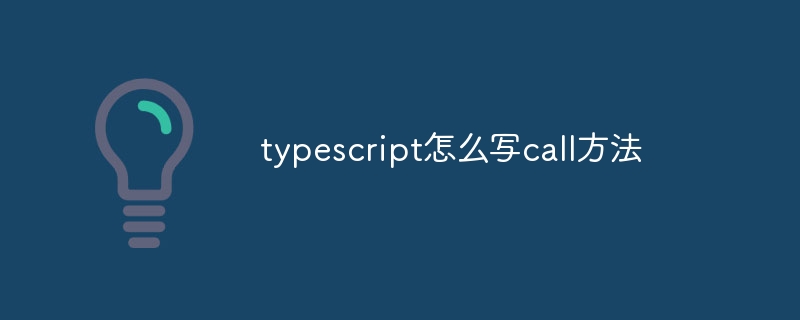typescript 中的 call() 方法用于將函數(shù)或方法綁定到特定對(duì)象,并使用該對(duì)象作為函數(shù)的 this 參數(shù)進(jìn)行調(diào)用。步驟如下:定義函數(shù)或方法。使用 obj.funcname.call(context, arg1, arg2, …) 語法調(diào)用 call() 方法,其中 obj 是要綁定的對(duì)象,funcname 是要調(diào)用的函數(shù)或方法名稱,context 是要作為 this 參數(shù)的對(duì)象,而 arg1, arg2, … 是要傳遞給函數(shù)的參數(shù)。typescript 會(huì)自動(dòng)將 this 參

如何使用 typescript 編寫 call 方法
回答:
TypeScript 中的 call() 方法可以將函數(shù)或方法綁定到特定對(duì)象,并使用該對(duì)象作為函數(shù)的 this 參數(shù)進(jìn)行調(diào)用。
詳細(xì)步驟:
- 定義函數(shù)或方法: 首先,定義需要綁定的函數(shù)或方法。
-
使用 call() 方法: 使用 obj.funcName.call(context, arg1, arg2, …) 語法,其中:
- obj 是要綁定的對(duì)象。
- funcName 是要調(diào)用的函數(shù)或方法名稱。
- context 是要作為 this 參數(shù)的對(duì)象。
- arg1, arg2, … 是要傳遞給函數(shù)的參數(shù)。
-
示例: 假設(shè)有一個(gè) Person 對(duì)象,里面有一個(gè) getName 方法:
class Person { name: string; constructor(name: string) { this.name = name; } getName() { return this.name; } }登錄后復(fù)制要使用 call() 方法將 getName 方法綁定到另一個(gè)對(duì)象,可以這樣寫:
const otherObject = { name: "John" }; const getNameFn = Person.prototype.getName; const fullName = getNameFn.call(otherObject); // "John"登錄后復(fù)制 - 注意: 只能綁定不帶 this 參數(shù)的函數(shù)或方法。 TypeScript 會(huì)自動(dòng)將 this 參數(shù)綁定到 context 對(duì)象。
- 可選參數(shù): call() 方法還可以接受一個(gè)可選的第二個(gè)參數(shù),它是一個(gè)可選的工廠函數(shù),用于在調(diào)用函數(shù)之前創(chuàng)建 this 上下文對(duì)象的新實(shí)例。






.png)
推廣.jpg)